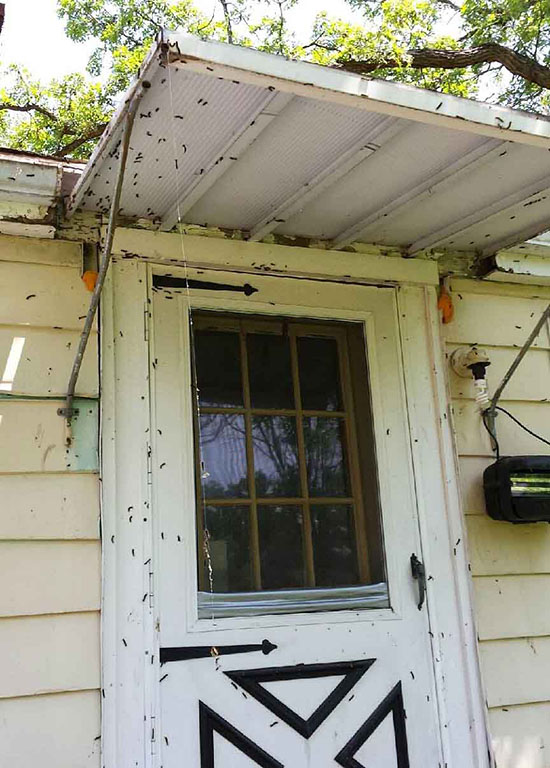Issue 6, June 1, 2015
Gypsy Moth
Gypsy moth caterpillars are fully grown in northern Illinois and are migrating to pupation sites. They are up to two inches long, dark, and hairy with pairs of blue and red balls in rows down their backs. Mature caterpillars climb down from infested trees and migrate, looking for a place to pupate. They locate a crack or crevice and pupate there, emerging as moths later in June to mate and lay eggs that overwinter.

Gypsy moth mature migratory larva.
In this wandering stage, the caterpillars have ceased feeding so any insecticide that requires ingestion such as Bacillus thuringiensis kurstaki is not effective. During this time, the internal portion of the caterpillar has already started to digest the internal layers of the exoskeleton to recycle those materials and use them in the pupation process. In other words, there is less contact between the outside of the caterpillar and the internal organs. For this reason, contact insecticides such as pyrethroids are also unlikely to be very effective.
Physical removal of the caterpillars is time and labor consuming. Sprays of insecticidal soap are likely to be the most effective. They will not only wash the caterpillars off of buildings, but should also dry up and kill them. More than one application may be necessary as many caterpillars will migrate several days after others. Homeowners should be able to accomplish this with an insecticidal soap concentrate applied with a hose-end sprayer.

Gypsy moth migrating larvae on house gable.

Gypsy moth migrating larvae on porch.
This is an opportunity to suggest foliar larval insecticide sprays in following springs to not only control the young, feeding caterpillars before they mature and migrate, but primarily to prevent leaf loss and health impact to host trees. (Phil Nixon)
Author:
Phil Nixon